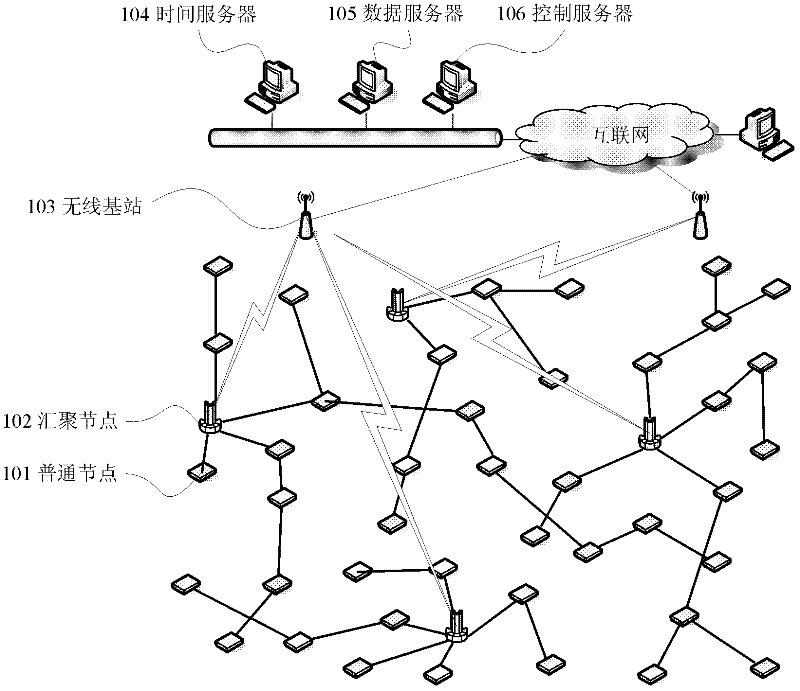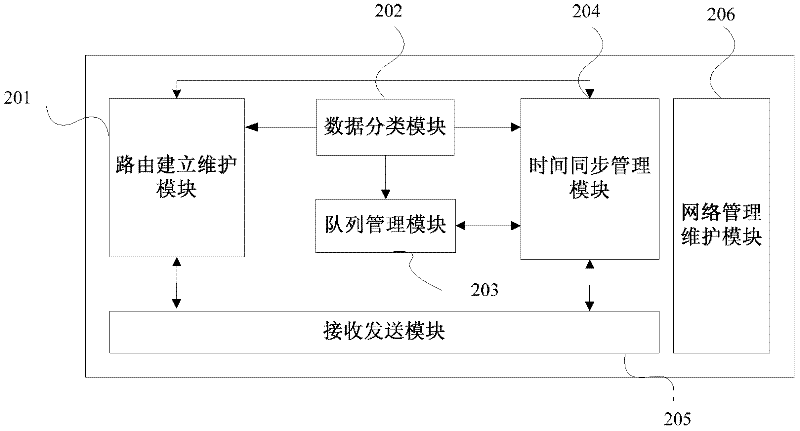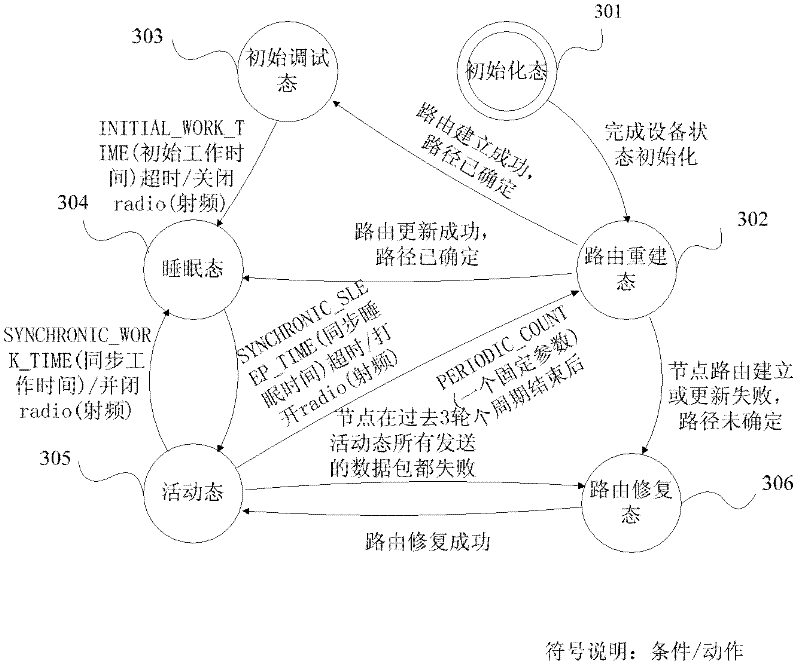Networking method and system for wireless sensor network based on multiple sink nodes
A wireless sensor, multi-sinking node technology, applied in network topology, wireless communication, advanced technology, etc., can solve the problems of unstable wireless link, sinking node, high energy consumption, and reduction.
- Summary
- Abstract
- Description
- Claims
- Application Information
AI Technical Summary
Problems solved by technology
Method used
Image
Examples
Embodiment Construction
[0081] The method and system of the present invention will be further described below with reference to the accompanying drawings.
[0082] The invention proposes a networking method for large-scale sensor networks. The design of common nodes is characterized by:
[0083] (1) Common nodes are divided into synchronous working state and asynchronous working state. Ordinary nodes go through an initialization phase, in which a routing path is established for the first time. If the routing is established successfully, it will enter the synchronous working state; otherwise, it will enter the asynchronous working state.
[0084] (2) In the synchronous working state, the common node works in a low duty cycle for several rounds and then undergoes an update routing process, and the cycle is repeated.
[0085] (3) The node is in the dormant state of each cycle, and the microprocessor module, the sensor module and the wireless communication module are turned off. The microprocessor mod...
PUM
 Login to View More
Login to View More Abstract
Description
Claims
Application Information
 Login to View More
Login to View More - R&D
- Intellectual Property
- Life Sciences
- Materials
- Tech Scout
- Unparalleled Data Quality
- Higher Quality Content
- 60% Fewer Hallucinations
Browse by: Latest US Patents, China's latest patents, Technical Efficacy Thesaurus, Application Domain, Technology Topic, Popular Technical Reports.
© 2025 PatSnap. All rights reserved.Legal|Privacy policy|Modern Slavery Act Transparency Statement|Sitemap|About US| Contact US: help@patsnap.com



